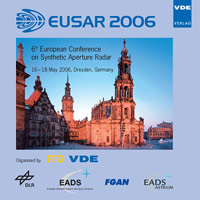Sea Ice Deformation Mapping by Means of SAR
Conference: EUSAR 2006 - 6th European Conference on Synthetic Aperture Radar
05/16/2006 - 05/18/2006 at Dresden, Germany
Proceedings: EUSAR 2006
Pages: 4Language: englishTyp: PDF
Personal VDE Members are entitled to a 10% discount on this title
Authors:
Dierking, Wolfgang; Busche, Thomas; Saldern, Carola von; Hartmann, Jörg; Haas, Christian; Lüpkes, Christof (Alfred Wegener Institute for Polar and Marine Research, Germany)
Hajnsek, Irena; Scheiber, Rolf; Horn, Ralf; Fischer, Jens (German Aerospace Center, Germany)
Dall, Jørgen (Technical University of Denmark, Denmark)
Abstract:
Deformation features such as ridges, hummocks, or rafted floes are typical characteristics of sea ice in the Arctic and Antarctic. Mapping these features is of interest not only for marine traffic and offshore operations in polar environments but also for climate research. Synthetic aperture radar (SAR) is regarded a useful tool for sea ice deformation mapping. The capability to quantify the sea ice deformation state with sufficient accuracy depends on frequency, polarization, incidence angle, and spatial resolution of the SAR sensor. Therefore, we utilize data of different airborne and spaceborne SAR systems and of complementary measurement devices such as laser profilers, optical scanners, electromagnetic induction sounders, and meteorological instruments to assess the pros and cons of different SAR configurations and to establish empirical algorithms for retrievals of geophysical parameters such as aerodynamic roughness. The intention of this paper is to give a short overview of our recent activities.


